#3: On Keeping a Reading Log, a Favourite Illustrator, and Interactive Readings of Art
Ways to administrate your reading, beautiful illustrations, and poetry and paintings turned into an interactive art form on your screen.
Cataloguing My Reads
When you read as many books as I do (over 140 in 2024, and currently at 36 for 2025 as I’m writing this, to give you an idea), chances are that you remember only a fraction of them. In fact, when you ask me what book I read last week, I probably won’t be able to tell you either the title or what it was about. Sad, right? That is why I use two tools to administrate my reading.
The first of these two tools is Goodreads, originally created by fervent reader Otis Chandler and his girlfriend Elizabeth as a social network for book lovers. They launched their site in 2007 and built and ran it next to their full time jobs for many years. Proving everybody who said it would never be more than a niche website wrong, they sold it to Amazon in 2013 (for 150 million dollars, in case you were wondering…), and it is now the world’s biggest site for readers. Their founder story is pretty cool, it’s on the How I Built This podcast with Guy Raz if you’re interested.
(Sidenote: if founder stories are your thing, Guy interviews plenty of founders on his podcast. He’s talked to almost everyone, such as the guys from Strava, or the founders of Etsy, Audible and Jo Malone, to name a few). Check out his show here: Goodreads episode
Back to Goodreads. To be honest the app kinda sucks. The search function is lousy, and it boggles the mind that Amazon hasn’t optimized certain functions. But it’s a great tool to catalogue what you have read and still want to read. You can also rate a book (which I do) and write a review (which I don’t). Rating my books after reading them is quite helpful. When I don’t remember whether I have read a certain book or whether I liked it, I just log onto my Goodreads to check. I know, it’s insane, but what can I say, I just read too much to remember it all!
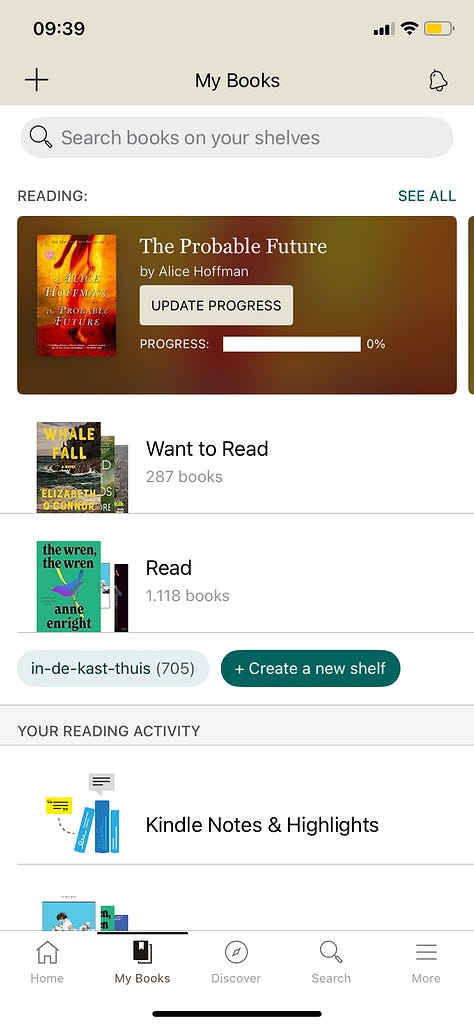
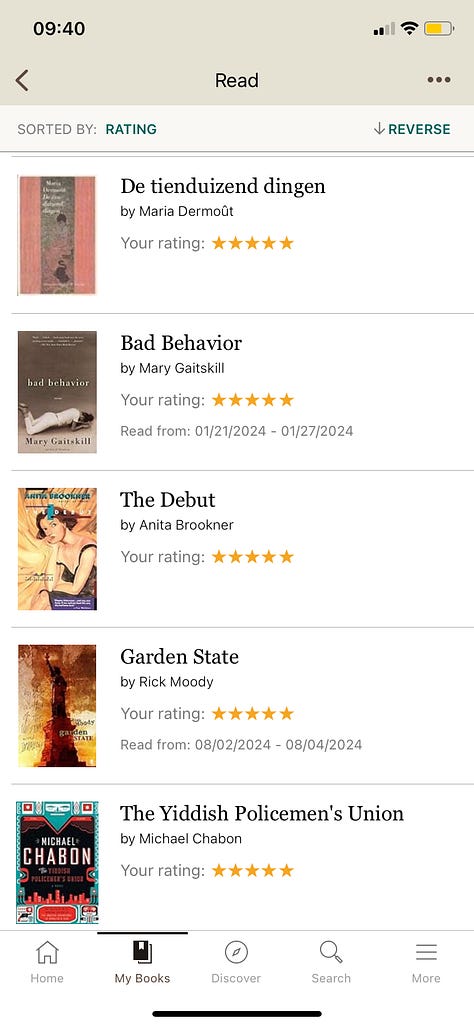
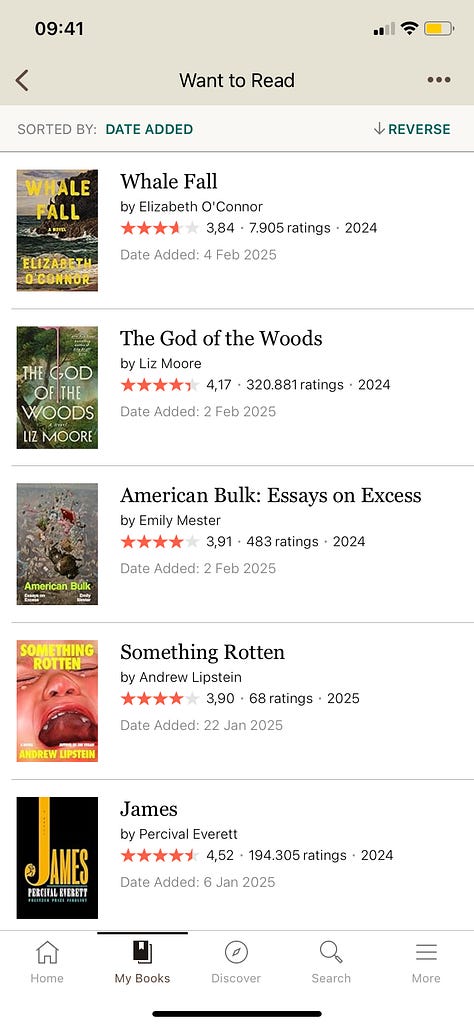
The other ‘tool’ I use in addition to Goodreads is less sophisticated and was inspired by my father. Like me, he read an awful lot. After he died in 2016, I went through the reading lists he had kept for ages. They were very succinct, showing just the title, a 1-4 stars score, and no more than a few words per book. I loved this insight into his reading and quite soon after that, started keeping a list myself. I keep a notebook in which I note the month, author, title, rating (between 1-10), and a 4-5 line basic ‘review’. I have been a big reader since I was a child, and I wish I had started logging my books sooner, I’d love to see now what I thought was great 15, 20 or 30 years ago.
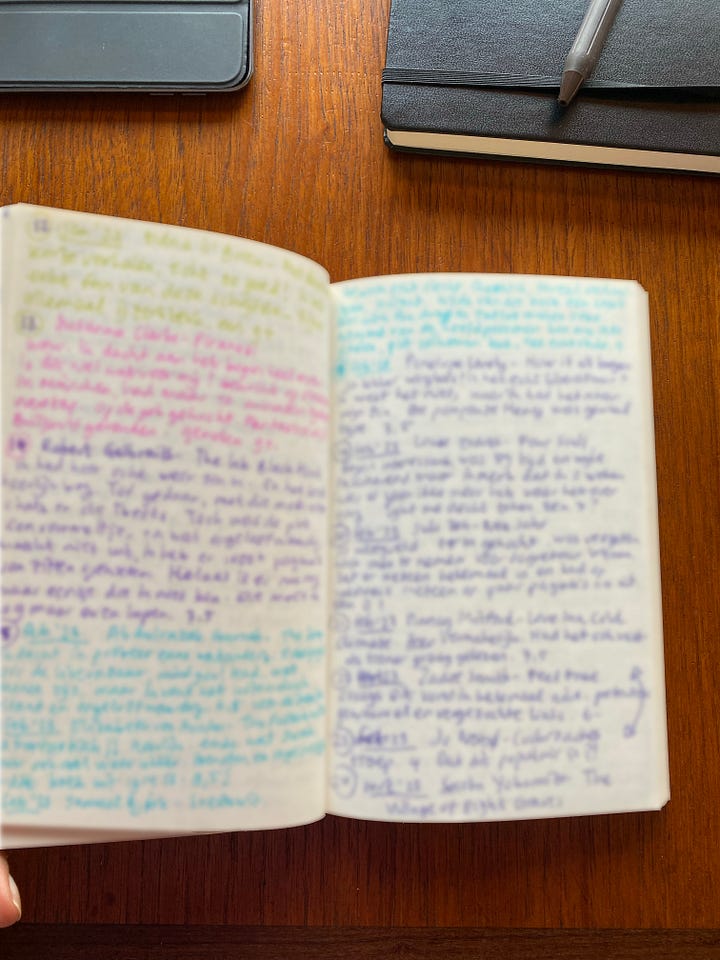
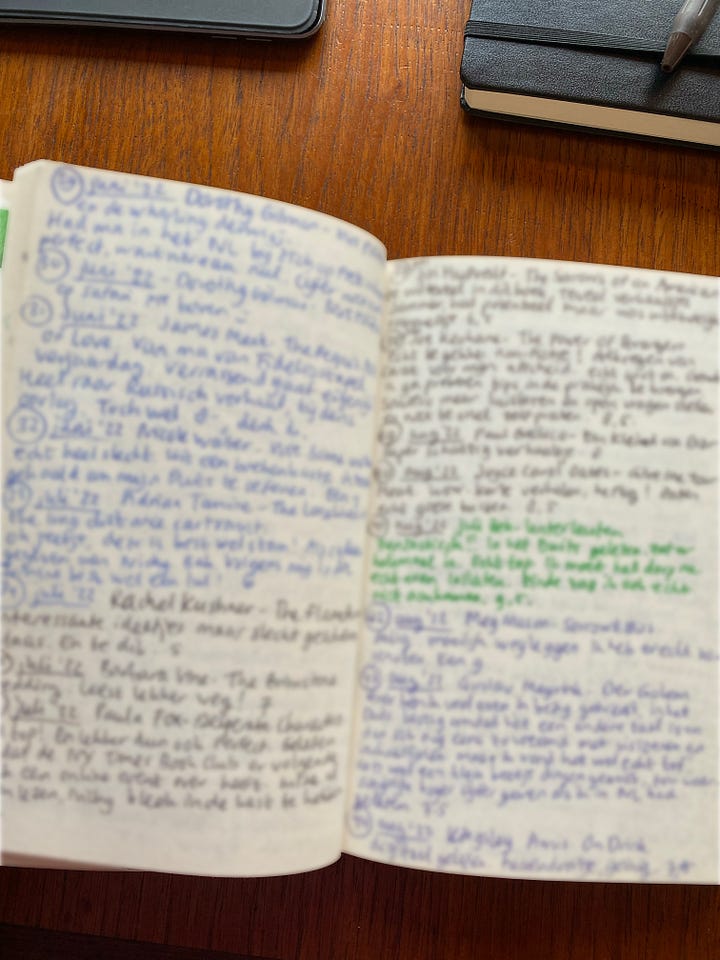
I am often asked for reading tips. Instead, you could look me up on Goodreads and check the books I rated 4 or 5 stars! But before you do that, let me quickly dismiss the myth that I only read ‘literature’. In reality, I read extremely high-low. Partly because I don’t buy many new books, but instead, am led by what I find in second-hand stores. And partly because I get gifted huge piles of random books by my mother. More on that in my previous newsletter.
Two art prints that could never bore me
In May 2020, during the depths of Corona lockdown in the Netherlands, I was mindlessly scrolling the internet when I came upon an illustration that stopped me in my tracks. I purchased the print within a split second. It was a lockdown-themed riff on a New Yorker cover by Luis Mendo, of whom I had never heard before.
During lockdown in Japan, where Luis lives, he made a series of home scene illustrations for himself titled The Home Stayer. These are depictions of interiors so nice that you wouldn’t mind being stuck there during a lockdown. Looking at these images, I got a sense of peace and contentment. I guess I wasn’t the only one, because the limited edition Home Stayer prints sold out in a couple of days - and one of them went to me!
The framed print hangs on our ‘gallery wall’ in the tiny room on our rooftop, where every time I look at it, it gives me the warmest fuzziest feeling. The illustration really draws me into this scene of domestic pleasure and warmth.
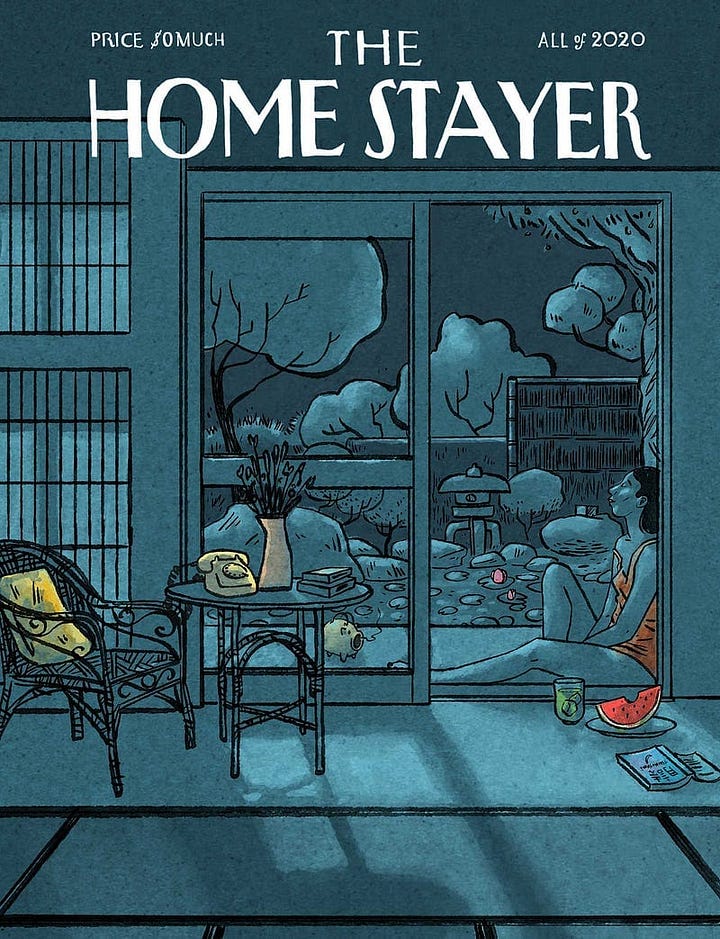
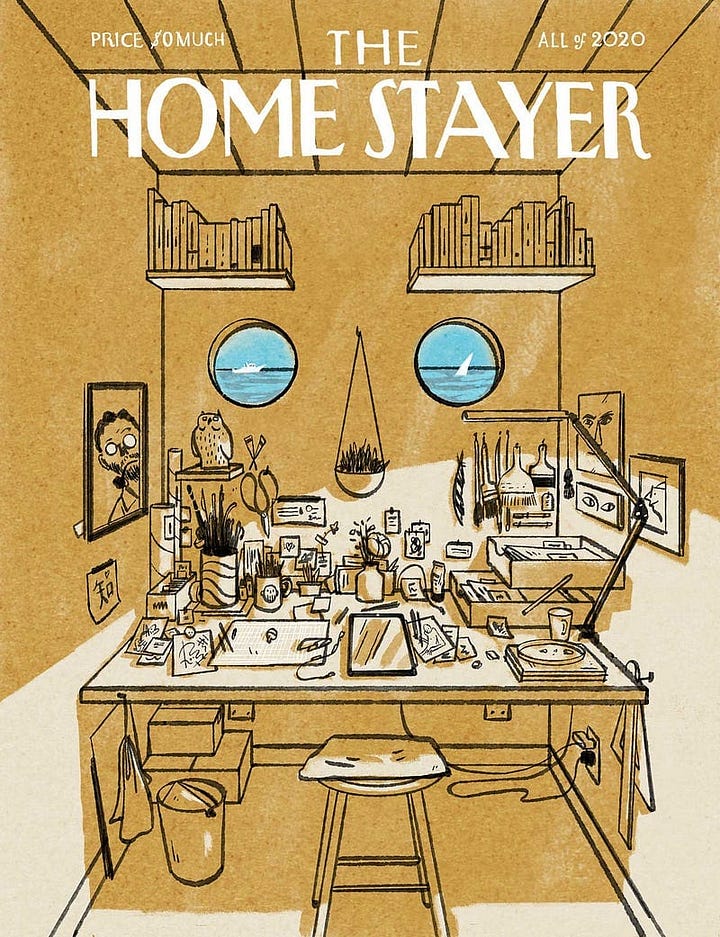
I am a big fan of anything Luis draws - but he wasn’t always an illustrator. He studied graphic design and for about 20 years he worked as an art director in Amsterdam. But at age 44 he burned out and took himself on a 3-month sabbatical to Tokyo, where he liked it so much, that he decided to stay. He did not speak Japanese well enough to be an art director again, and with nothing else to do, he started to draw every day. His illustrations on Instagram drew the attention of his former colleagues in Amsterdam, one of them got him in touch with an agent in Tokyo, and before Luis knew it, he had started a (very successful) career as an illustrator.
You may have seen his work in for example Volkskrant Magazine, Financial Times, The Guardian and Wired Magazine. He has a very recognizable illustration style and says he tries to make invisible emotions such as melancholy and kindness visible in his art. There is also often an element of nostalgia, or some vintage vibe, but in a timeless way.
Two years after my first purchase, I bought my second Luis Mendo print, the one below.
I *had* to get this one, since it more or less depicts my dream occupation. Reading in my own bookshop, soft jazz in the background, and getting slightly disturbed whenever someone enters my store.
When purchasing a piece of art, I always consider whether it is something I will get bored of quickly. I know that my two works from Luis Mendo will never bore me. On the contrary, I love them more each time I look at them.
For more info on Luis, watch this 5-minute video on his website https://www.luismendo.com/about. Or visit his Instagram @luismendo. And let me know if you buy a print too, although the Home Stayer series has completely sold out, sorry ;-)
Poetry made visually attractive
I hardly read any poetry, it is not very much on my radar. But I love the interactive close readings of poetry (and art) that the New York Times do on their website. This probably sounds vague, sorry.
The NY Times produce beautifully designed interactive readings of poems, reflecting on the authors, the background story, but also often on art in general. Is this vague but tempting enough to have you take a look at one of them? Perhaps this one: A Poem (And A Painting) About Suffering That Hides in Plain Sight. It is a gift link, so you can read it even if you don’t have a subscription. Or potentially, if you are curious but not in the mood for poetry, this is a beautiful investigation of a painting by Berthe Morisot and the impressionist art of being seen, and it gives great context on women’s position in the art world in the late 1800’s.
Thanks for reading this far - that’s it for this week. In the next newsletter: my favourite author and 2 very different woodcut artists! Feel free to forward this newsletter to anyone who might like it, and subscribe if you haven’t already. Back in 2 weeks!






